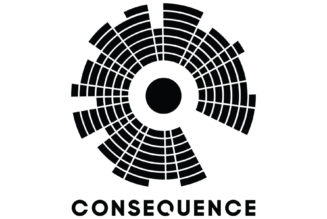A showroom of affordable (and profitable) electric vehicles in all shapes and sizes has long been the holy grail for automakers and regulators alike.
It is a long-standing dance that has gone on for nearly 50 years: Regulators set ambitious emission-reduction targets with long lead times, the established automakers cry, “Impossible!” then hunker down and either work to defang the mandates or occasionally hit the targets, sometimes ahead of schedule. Solutions to date have been a mix of improving the efficiency of the gas-powered fleet, adding hybrids, and developing a few token electric vehicles to be sold at a loss to the few buyers who want them. Lather, rinse, repeat.
Automakers have attempted to lure the public into electric vehicles but made little headway. Part of it is confirmation bias: Automakers spend far more advertising gas-guzzling SUVs than battery-powered hatchbacks. As the O’Jays sang, you got to give the people what they want.
As a result, pure electric vehicles still account for less than 2 percent of U.S. vehicle sales, and four out of every five of those sales is a Tesla, according to consultancy IHS Markit. But is the market poised for change?
Tipping Point in EV Popularity?
The prized chalice is within grasp as the industry is swiftly pivoting to offer a wide range of EVs fitted with cheaper and more energy-dense batteries, thus delivering greater range and lower vehicle prices that bring them ever closer to parity with their gas-powered counterparts.
“We’ll reach a point in the U.S. where nearly every brand offers modern, compelling battery electric vehicles soon, and that is a clear change,” IHS Markit principal analyst Stephanie Brinley said. To Brinley, this appears to be the tipping point in automaker participation—one that goes beyond compliance vehicles to meet governmental regulations.
The shift makes President Joe Biden’s call for the U.S. to achieve a 100 percent clean-energy economy and reach net-zero emissions by 2050 plausible. The target is ambitious, but Biden’s timeline is further out than many of the pledges from automakers themselves.
Globally, companies, cities, states, and countries are phasing out or downright banning new vehicles with combustion engines decades before that. China and Europe are embracing the sea change more quickly than North America, but in a global industry, all boats will rise with this tide.
Automakers are multitaskers. They are working on minor improvements for the next model year while engineering new models to debut four years out and developing technology that might be decades from reality. But now, more than ever before, designers and engineers are seeing green. CEOs such as Mary Barra at General Motors, Herbert Diess at Volkswagen, Håkan Samuelsson at Volvo, and Adrian Hallmark at Bentley are staking their careers on a successful transition to electric and autonomous vehicles.
Challenges to Surmount
The challenges are real. The technology is still evolving, which makes battery electric or fuel cell vehicles expensive to develop and purchase. That relative high cost of entry makes consumers nervous about flipping the switch after a lifetime of vehicles with combustion engines under the hood.
Tesla, which launched its first electric car in 2008, changed attitudes. Electric vehicles became hip. But one company, which took years to achieve volume sales and meager profit, is not enough to move the market, and most Teslas come at premium prices.
Tesla has spurred other startups to action, many of which show promise, including Rivian, Lucid, and Nio—not to mention dozens of Chinese companies most of the public has never heard of. The long-established automakers don’t want to be left behind, either, like the last buggy whip salesman of 1920.
This could be the year EV sales take off, with more than a dozen new models expected to launch, adding to 20 already on the market in 2020. IHS Markit expects more than 100 nameplates to offer a battery electric option in 2025. EV share could more than triple from 1.8 percent of U.S. registrations last year to 9 percent in 2025 and 15 percent in 2030.
Toyota is particularly bullish: EV sales will grow to as high as one in every six vehicles by 2030, said Bob Carter, head of sales for Toyota Motor North America. That would represent greater volume than all of the Japanese company’s Lexus division in the U.S.
Worldwide sales of electric vehicles were about 2.5 million last year and seem ready to explode. China is already the world’s largest EV market at 1.1 million annual units, up almost 10 percent last year, according to China Passenger Car Association data. China could see EVs rise to 15 percent of its new car fleet in 2025 and 24 percent in 2030. In Europe, EVs are projected to reach 19 percent in 2025 and 30 percent in 2030, a trend presaged by Norway, where EVs outsold internal combustion vehicles last year thanks in part to hefty financial incentives.
These figures do not include the continued proliferation of hybrids and plug-in hybrids, as electrified powertrains become a common option in the showroom—choose a model, a color, a powertrain, and a tech package, then grab the keys.
“Relying on incumbent [internal combustion engine] technology for profits has now become high-risk as electric vehicle sales rise and their market share grows from niche to mainstream,” David Leggett, Automotive Analyst at GlobalData, said. GlobalData forecasts 46.1 percent of all new vehicles sold globally will be electrified in some form by 2030. “‘Wait and see’ is no longer a sensible strategic option. Urgency is required.”
Learning Curve for Old and New Electric Carmakers
Conversely, conventional automakers that have made vehicles for decades, like Volkswagen, are discovering you might be able to assemble a vehicle in your sleep, but it doesn’t mean you will get technology right out of the gate. The launch of the VW ID3, a mass–market EV for Europe, was delayed because it was plagued with software problems. And many mass-production automakers are having issues hitting driving range numbers Tesla achieved years ago.
The good news is all automakers, new and old, are getting in the game. Some have created new brands (see Hyundai’s Ioniq, among others) and dedicated entire plants to assembling battery-powered models. And the potential pie is enormous. “From my kids’, kids’, kids’ perspective, we as a planet need to electrify as fast as possible,” RJ Scaringe, CEO of electric vehicle startup Rivian, said. “It’s important the entire industry start to make this shift. We need to replace 100 million cars a year, about 1.5 billion on the planet, as quickly as possible.”
Smorgasbord of Electric Vehicles Coming
The number of brands offering EV options in the U.S. will grow from 16 now to at least 40 in 2025, and the vehicles will cover a wide range of segments and price points.
Luxury models from Audi, BMW, and Porsche will have competition as Bentley and Jaguar go full electric. Volvo was among the first to commit; Nissan will give the well-established Leaf a sibing in the Ariya SUV. Mini once again has an electric car, while the Korean marques have big plans for a new bespoke electric platform. (For more on each automaker’s plans, see the accompanying story.)
Settling Range Anxiety
Running out of juice remains a top-of-mind concern for buyers, who worry where the next charging station is—this despite the fact that most new models target a range of 300 miles on a single charge. So although many people might side with former GM and Chrysler exec Bob Lutz—who once sarcastically asked of running out of power, “Is there a can of electricity to put in?”—automakers tout studies showing the daily habits of most drivers occupy but a fraction of current range figures. That will ring even truer with future vehicles that aim for 500 miles on a single charge, with work on solid-state batteries hoping to make that the norm by mid-decade.
Most people charge at home or work, but concerns persist about the adequacy of a nascent public charging infrastructure. This is now everyone’s issue, with both the private and public sectors working to expand the network. President Biden has promised to deliver more than 500,000 charging stations as part of an infrastructure upgrade. (We think he means individual charging plugs, as there are only 168,000 gasoline stations in the U.S., according to fueleconomy.gov.) But at present, there are only about 31,000 public electric-vehicle charging stations in the U.S. with 97,000 chargers, according to the Alternative Fuels Data Center. About a third are in California. Broad coverage will take time, but the momentum is there.
Tesla set the pace early on and has about 20,000 charging stalls at 2,100 Supercharging stations globally, with more than half in North America. But those only work with Tesla vehicles. ChargePoint is the nation’s largest network with more than 25,000 public stations and 70,000 plugs in the U.S., and it has alliances with EVgo and Electrify America. Electrify America is investing $2 billion over 10 years to expand its open DC fast-charging network and will have about 800 stations with 3,500 chargers in 45 states by the end of the year. GM and its EVgo partner are adding 700 stations with 2,700 plugs over five years; EVgo already has more than 1,200 chargers.
Porsche and Rivian plan to build their own networks. Efforts are also underway to aggregate these charging networks into a single customer account for payment.
Government and Regulations
Governments are major players in motivating the public to embrace electric vehicles. In the U.S., President Biden began signing climate-related executive orders immediately upon taking office, among them an order to electrify the federal fleet of about 650,000 vehicles, invest in about 550,000 chargers, strengthen the domestic supply chain for crucial technologies and raw materials, create 1 million jobs in these areas, and offer more incentives for consumers to buy EVs.
Biden has also ordered an agency review to establish “ambitious, job-creating fuel economy standards.” Rules for 2021-2026 passenger vehicles are due by July and are expected to return to Obama-era standards.
“The Biden administration sees climate change as an existential threat,” Kristin Dziczek, vice president of research for the Center for Automotive Research, said. The president wants to accelerate the industry’s planned transition to electrification using “carrots” in the form of planned investments in clean energy, charging infrastructure, EV and battery R&D, U.S. manufacturing, and EV purchase incentives. Meanwhile, there are “sticks” in the form of more stringent fuel economy and greenhouse gas-emissions regulations.
“This administration has sent a strong signal that achieving the country’s climate goals must also achieve their goals for ‘Made in America’ and expanded labor rights,” Dziczek said. “Automakers and suppliers will likely see climate change, increased domestic manufacturing, and worker rights addressed in future federal government grants, loans, and contracting opportunities.”
At the state level, 16 states follow stricter California Air Resources Board emissions statutes. California new vehicle registrations dropped in 2020, but electric and plug-in hybrid sales increased. CARB spokesman Dave Clegern is bullish on achieving future ZEV goals.
Under a plan formulated by California Governor Gavin Newsom, the state will ban sales of new gas-powered passenger vehicles starting in 2035 and has a goal of 5 million electric and plug-in hybrid vehicles on the roads by 2030. Massachusetts has announced similar plans, and in Washington state, legislation introduced in January would mandate all new passenger vehicles there be electric starting with the 2030 model year. These three examples will help put the U.S. more in line with countries worldwide pushing for a 2030 phaseout of gas vehicles to meet their carbon-reduction goals. A similar nationwide plan is in a nascent state in Congress.
Japan wants to eliminate sales of gasoline-powered vehicles by the mid-2030s. A number of European countries are pushing to ban sales of new vehicles that use fossil fuels. The U.K. ban takes effect in 2030; Denmark, Sweden, Germany, and France are also among more than a dozen countries adopting similar mandates. Cars with combustion engines now make up fewer than half the newly registered vehicles in Iceland.
Power companies are also getting in on the action. The Edison Electric Institute said it is on track to electrify a third of its fleet vehicles by 2030 and will continue to work to expand the needed infrastructure. The EEI represents all U.S. investor-owned electric companies.
“There really is no alternative for car companies as lawmakers across the world start to plot mandating fossil fuel-powered vehicles out of the market,” GlobalData’s Leggett said. “Automotive electrification is an expensive proposition for vehicle manufacturers, but they are nevertheless concluding they must take the investment hit to be well-positioned competitively later this decade when the end for new internal combustion engine vehicle sales will be in sight in a number of markets.”
Supply Chain Issues
The auto industry is no stranger to supply issues; in a recent example, the 2011 earthquake in Japan damaged the world’s only supply of the pigment used in metallic paint, forcing U.S. plants to stop vehicle production. This year saw a shortage of semiconductor chips, affecting both conventional and electric vehicle production; some plants had to hit pause and sit on partially assembled vehicles while awaiting components.
Other potential supply issues involve procurement of vast amounts of lithium for batteries, as well as rare earth elements known as lanthanides necessary for magnets used in motor-generators. And while automakers boast technological gains that help reduce the per-kWh cost of battery packs, raw material costs remain volatile.
In 2013, the price per metric ton of battery-grade lithium was $6,500 but leapt to $17,000 by 2018. The amount dropped to about $8,000 in 2020 before rebounding again this year, according to statista.com.
Raw materials extraction typically occurs in frenemy nations such as China, poverty-stricken countries such as Bolivia, or strife-torn nations such as Congo or Zimbabwe, all of which come with politico-economic or moral costs. Although the U.S. has rare earth mining sites—potentially providing a transition occupation for lost coal mining jobs—strict environmental regulations have stifled their development. That represents a Catch-22 for those pushing for “clean” cars.
The Biden “Made in America” initiative includes a plan to create 1 million new jobs involving electric vehicles and the EV industry. That could prove difficult, however. Electric vehicles have a third fewer moving parts than a conventional vehicle, and fewer parts means less labor. Conventional vehicles require thousands of workers to make combustion powertrains and their parts.
What is clear is the march to an all-electric future is inevitable, and the industry is embracing it with a new vigor. If the grandiose promises and plans come to fruition, consumers will be offered EVs of all descriptions and at varied price points. As prices and charge times come down and range goes up, consumers will be more likely to buy in.










![Laidback Luke Launches New Mixmash Dating App to Connect Music Producers [Exclusive Interview]](https://www.wazupnaija.com/wp-content/uploads/2020/05/laidback-luke-launches-new-mixmash-dating-app-to-connect-music-producers-exclusive-interview-327x219.png)